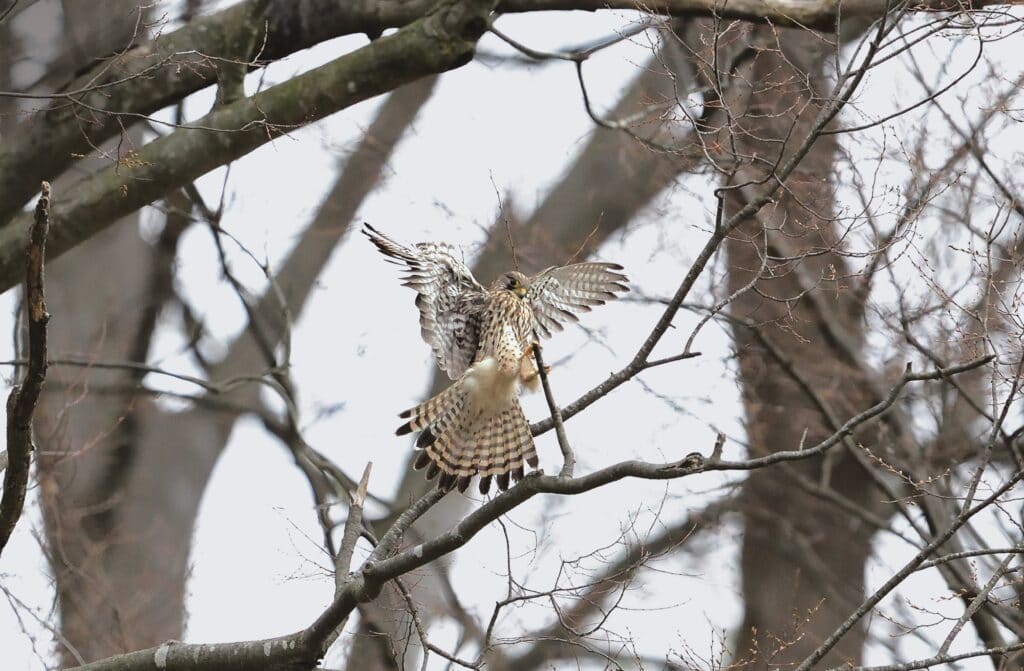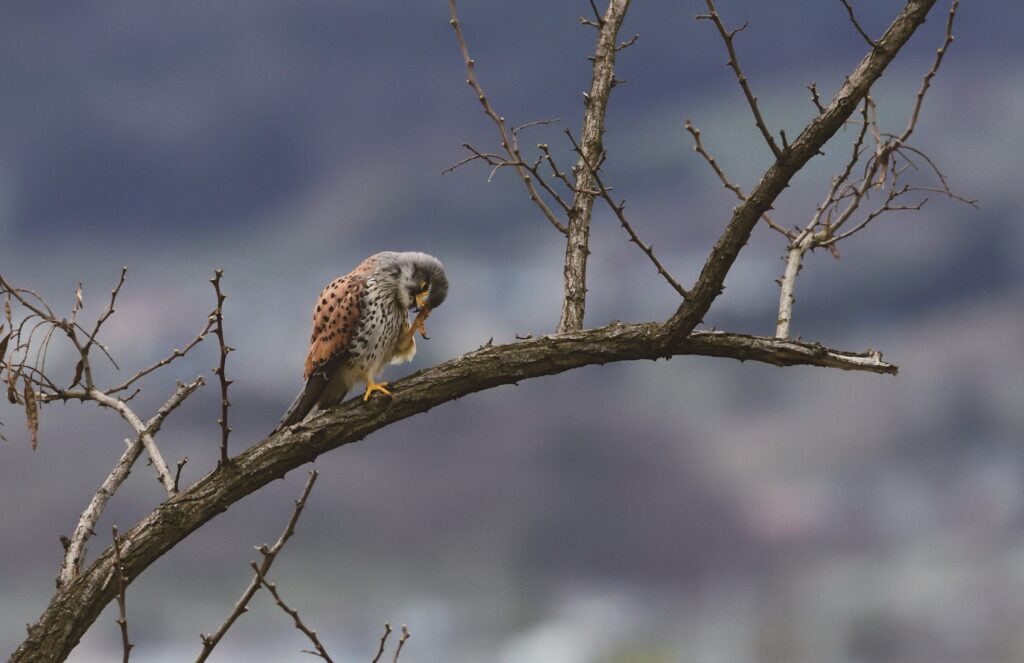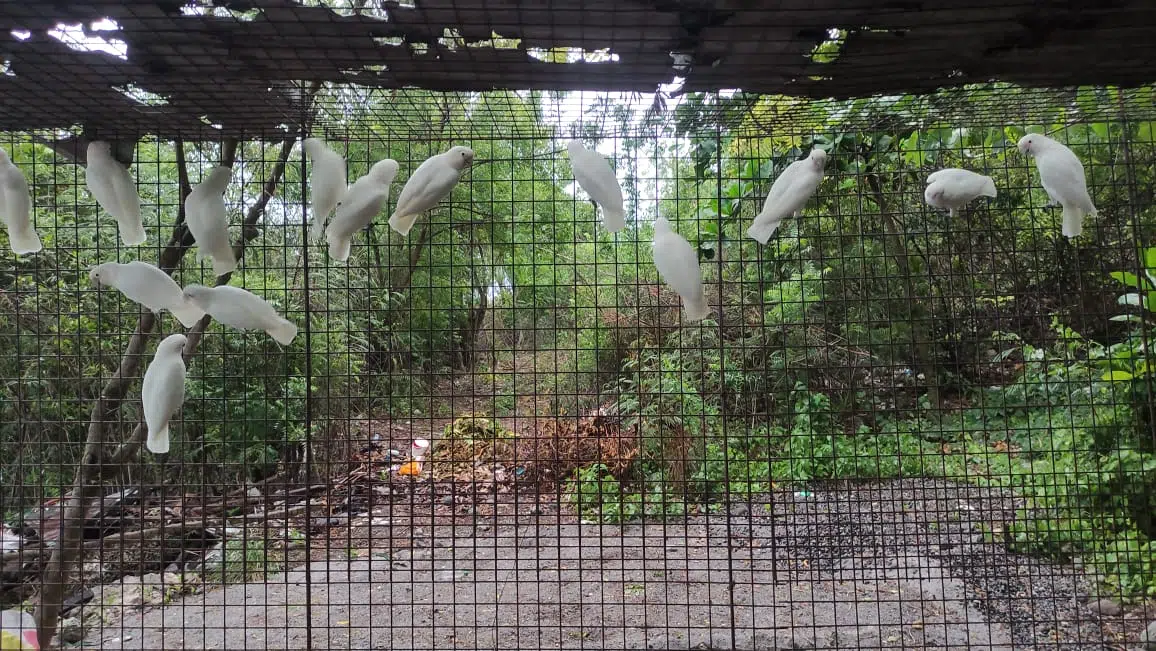Amusing Birds of Prey
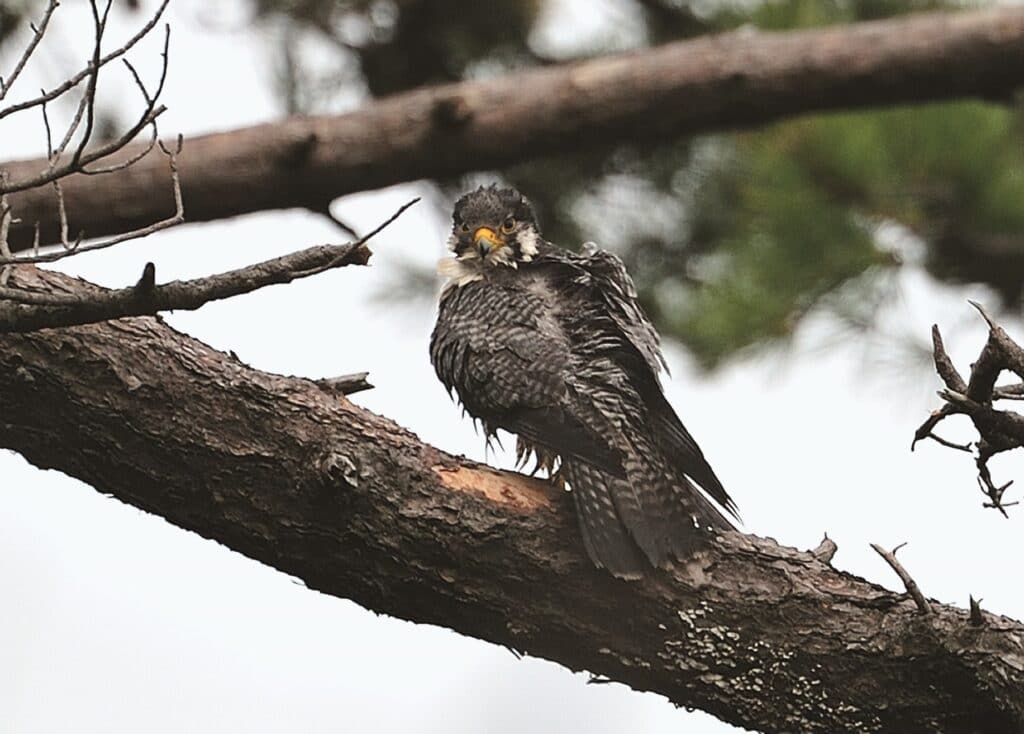
In my previous article, I wrote about the Black Kite being a clever hawk. This time, I would like to show you the humorous side of birds of prey, which are more commonly known for their expert hunting abilities.
Photos and text by HIH Princess Takamado
English Translation: Asia Club, a WBSJ Volunteer Group (YOKOYAMA Kazuko, KASE Tomoko, UENO Naohiro)
Originally published in “Through the Lens” Fujingahou Magazine, October, 2021
The first photo is of a Peregrine Falcon Falco peregrinus, almost the same size as a Crow and the biggest among those birds introduced in this article. The species dives at a maximum speed of 300 kilometres an hour, kicks down a flying bird and then catches it. The bird in the photo is a female, which was perching on a branch of a tree on a precipitous cliff on Okinoshima Island. Paired with a young male, it was busy nesting. I must have been very lucky to be able to observe the bird at eye level in such desirable fine weather, although I had only half a day for photographing.
I heard the female calling loudly to the male for food, “Quee, Quee”, and thought it might be possible to photograph the pair handing over the food in mid-air. I set the camera and waited for my chance. When, after a while, the male came closer to the female with food as a present, the female immediately flew up. However, the food was not handed over in the air – instead, the pair moved to another thick branch. There may have been a flat space onto which, to my eyes, the male seemed to have dropped the prize. I madly clicked away the shutter.
Later, I magnified the shots taken, and learned that the prize was an already-plucked large bird. After receiving the prize, the female moved to a protruding branch, tore away at the food with her beak while holding it with her talons, and ate it while looking around cautiously. When finished, she cleaned her beak by repeatedly rubbing it on the branch, then flew away. When she returned 10 or 15 minutes later, I managed to get the above photograph. The bird must have been to the beach to wash away the meat and blood stuck to her feathers in the shallows. She may have noticed me, thinking “wow, I’m being watched!”, because she was regarding me with a rather pop-eyed expression.
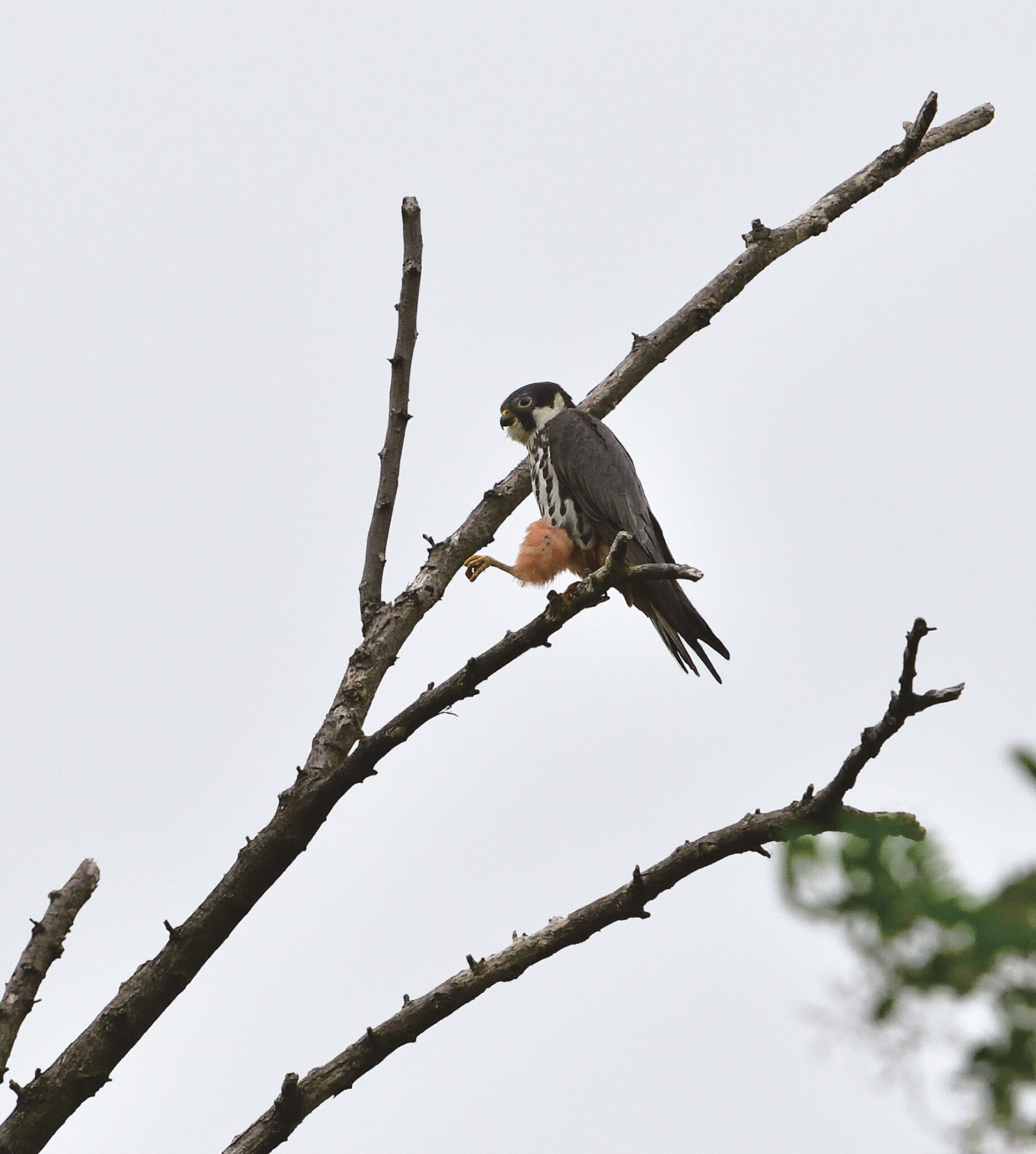
The Eurasian Hobby Falco subbuteo is smaller than the Peregrine Falcon – about as big as a dove. When I was photographing a Northern Goshawk Accipiter gentilis, I noticed something perching on a branch close to me and confirmed it with my binoculars. Mistaking it for a Peregrine Falcon at first, I softly pointed my lens at it and clicked the shutter. After I had taken several shots, however, the bird began to groom itself and stretched its legs out suddenly. My eyes were fixed onto the red colour around the legs. The appearance, as if dressed in red pants, was unmistakably that of a Eurasian Hobby, which was my first ever sighting of this species. Not only did I have my first encounter with it, but I also got to take a nice shot of the bird. What a good luck!

Common Kestrel © HIH Princess Takamado 
Common Kestrel © HIH Princess Takamado
The other two photos are of the Common Kestrels Falco tinnunculus. When I was photographing a young male grooming itself, it made a motion as if scratching its ear. This species usually stands firmly on its legs, looking quite bold – but the way this kestrel perched there with his eyes comfortably closed struck me as very charming.
The last photo is of a female Common Kestrel. I occasionally see a bird fly down onto a branch and, “oops!”, lose its balance – but in case of this female kestrel, there was an additional ordeal waiting for it. Because the branch grew vertically, it was already difficult for the bird to keep her balance. But now, a male approached for mating and mounted on her back. The branch swayed due to their weight, so each bird pair had to keep its balance carefully by spreading its wings, and finally they finished mating. When the male flew away, the female tumbled once again. I could not help but laugh at this humorous incident.
The elegant aspects of birds of prey are attractive, but so are their humorous ones. Experiencing such moments with birds enables me to have a more rewarding and enjoyable time. When watching the amusing antics of birds of prey, it dawned on me that we find “charm” not in anything perfect, but in the unexpected moments of relaxed tension. This may be true for everything in Nature. I know I am being led to various realisations through the time I spend with birds.
Related news
Stay up to date
Sign up to receive the latest bird conservation news. You’ll also receive updates about our projects, science and other ways to get involved including fundraising.
Thank you for your support, we are committed to protecting your personal information and privacy. For more information on how we use your data, please see our Privacy Policy. You can unsubscribe from emails at any time by using the link in the footer of any email from us.


